
Reviewed by
Beck Jinnette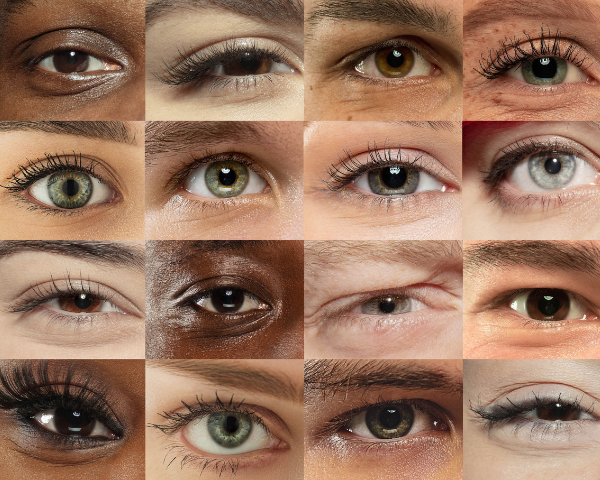
If you were asked to describe what someone looks like, what features would you include in your description? For many, eye colour would be one of the first things mentioned. It is a very noticeable aspect of a person’s look, and can often be the first thing that strikes us when meeting someone new.
Although it receives less attention, there is another ocular trait that impacts physical appearance and natural beauty; eye shape. Maybe you’ve occasionally remarked that someone has particularly wide, deep-set, or narrow eyes, but did you know there are actually ten distinct eye shapes that categorise this facial feature?
The 10 different eye shapes
As opposed to face shapes (which are very loosely divided into four different options), different eye shapes are defined in more detail, as evidenced by the larger number of categories. The eyelids, openness and angle of the eyes, and other factors are involved in the classification of eye shapes.
These small details are perhaps not something you consciously recognise, but they definitely have an effect on our overall perception of people’s faces. Read up on the characteristics of each eye shape below, and you’ll soon be unwittingly using your newfound knowledge to identify the shape of every pair of eyes you see!
Etnia Barcelona fashion glasses are a form of personality. The frames within Etnia Barcelona portray class, sophistication and a dash of who you are. You simply can’t have a more fun, sexy or prestigious collection.
Almond shaped eyes
As the name suggests, almond eyes have an elongated, oval/almond shape and taper off significantly toward the corners. The defining feature of almond shaped eyes is that the iris touches both the top and bottom eyelid. This means that the sclera (the white part of the eye) is not visible directly above or directly below the iris.
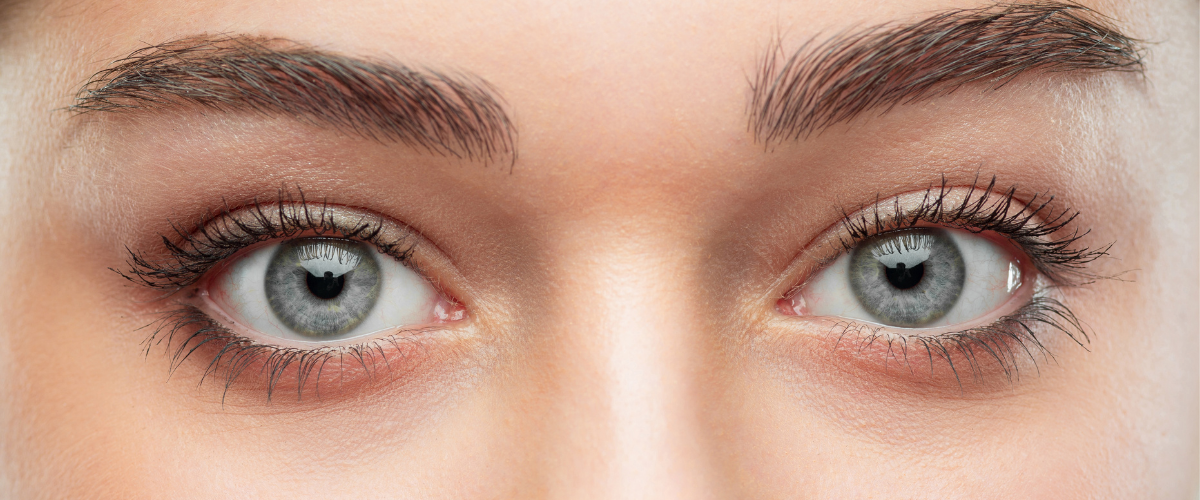
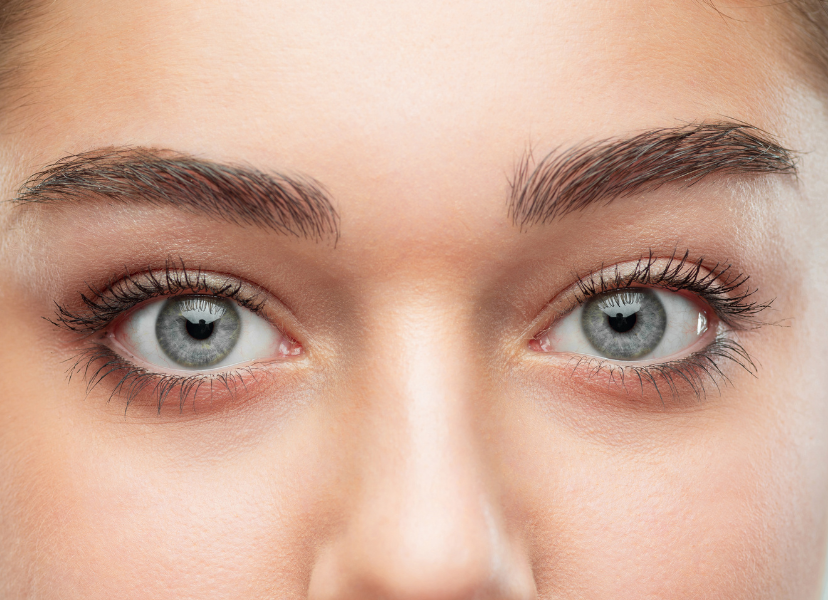
Round eyes
With round eyes, the white of the eye is visible both above and below the iris, which can make them stand out more as a facial feature. The inner and outer corners have a less prominent taper than those of almond eyes. Round eyes also have a visible crease in the skin of the upper eyelid.
Protruding eyes
Some people’s eyeballs are naturally set further forward in the eye socket. The result of this is protruding eyes. The shape of the eyeball itself is more prominent, making the eyes look rounder. With protruding eyes, a large proportion of the white of the eye is visible, as the eyelids typically do not reach the iris.
Monolid eyes
The eyelids are the determining factor here, as they have no crease or fold. This sets the monolid eye shape apart from other eye shapes and gives them a very distinct appearance.
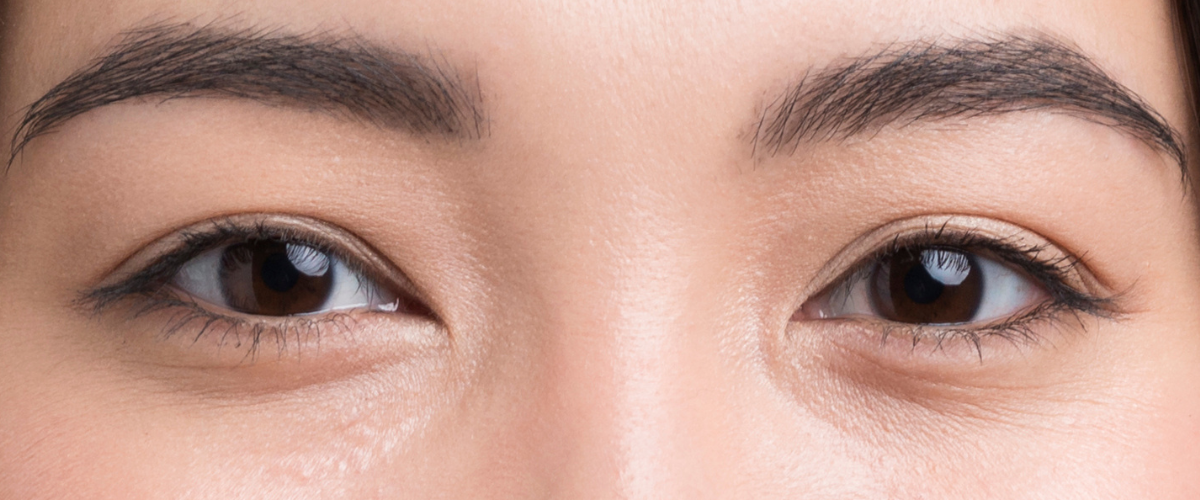
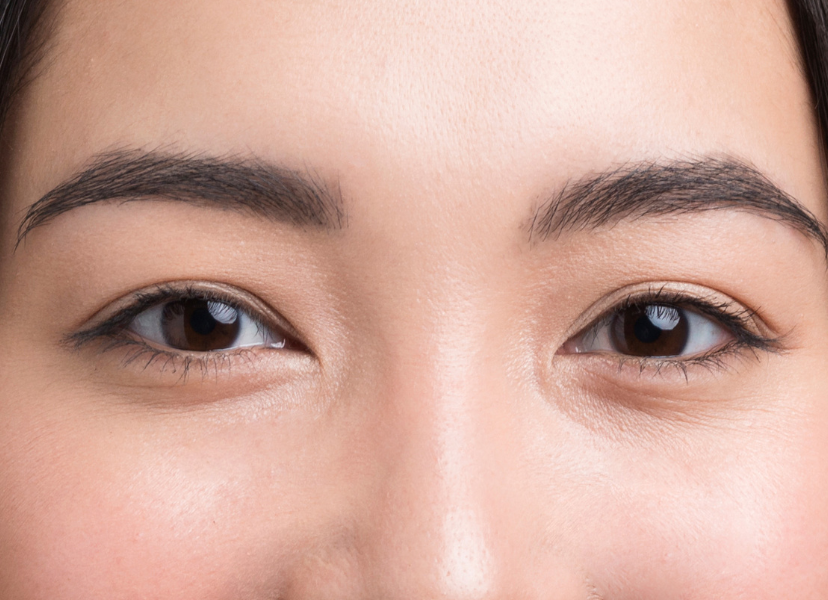
Monolid eyes appear flat as the smooth eyelid does not cling tightly to the eyeball. It is common for people of Asian descent to have monolid eyes. They are also called epicanthal folds.
Downturned eyes
The main characteristic of downturned eyes is the outer corners of the eyes. With most eye shapes, the outer corner is slightly higher than the inner corner. With downturned eyes, it is level with, or slightly lower than the inner corner.
The outer edge of the upper eyelid usually also slopes downwards more steeply than with other eye shapes.
Ask our dispensing optician
Your request was successfully submitted!
DID YOU KNOW?
The rarest eye shape differs depending on where you are in the world, as some eye shapes are more commonly found in certain populations than others.
Upturned eyes
Unsurprisingly, upturned eyes are the opposite of downturned eyes. In this case, the outer corner is positioned higher than the inner corner. The overall shape is similar to almond eyes, but with the added lift in the outer corner.
Upturned eyes are sometimes referred to as “cat-eyes”, and there is a clear resemblance between this eye shape and cat-eye glasses frames.
Close-set eyes
Rather than the shape or angle of the various parts of the eye, close-set eyes are defined by their position in relation to one another. Eyes are generally considered to be close-set if the distance between the inner corners (from one tear duct to the other) is less than one eyeball width.
Your eyes may be close-set while also having a round, almond, or any other shape.
Wide-set eyes
Once again, it’s all in the name. If the distance between your eyes is greater than one eyeball width, your eyes are considered to be wide-set. Although particularly wide-set eyes can be a trait attached to certain medical conditions, some people’s eyes are simply further apart than others.
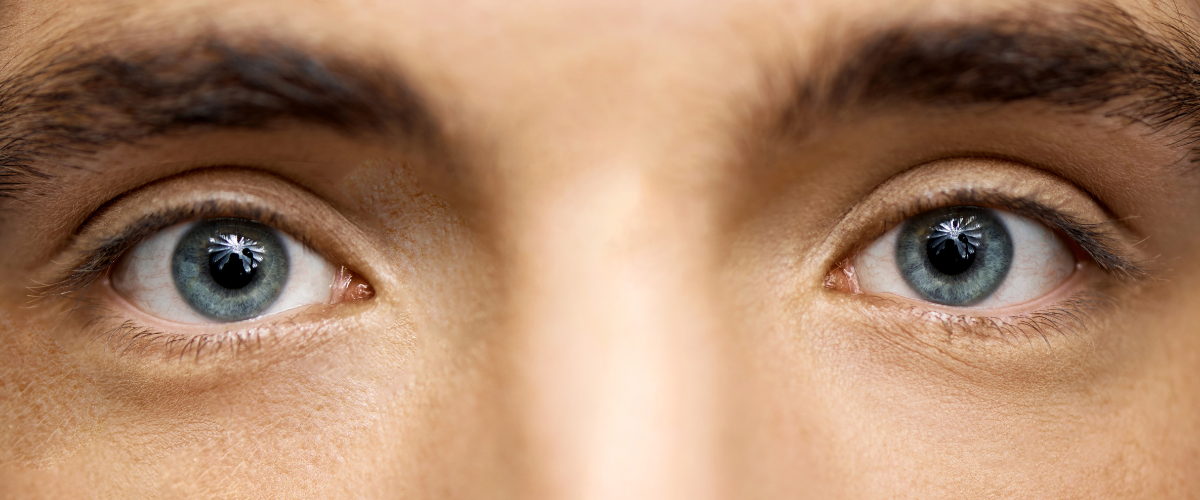
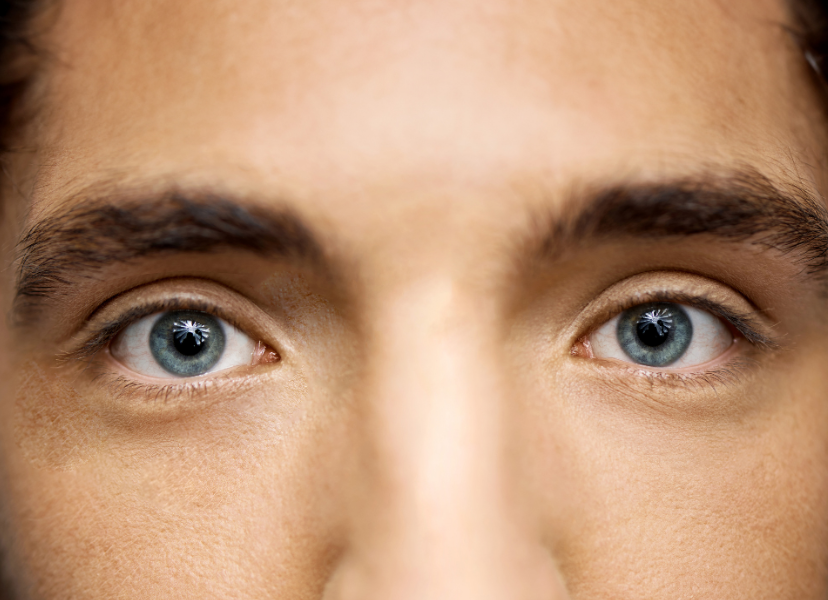
Deep-set eyes
With deep-set eyes, the eyeball sits further back in the socket, creating the opposite of the bulging appearance associated with protruding eyes. As the eyes are further back in the skull, the brow bone has a more prominent, even protrusive look.
Hooded Eyes
Hooded eyes occur when there is an overhang of skin on the upper eyelid. This conceals the crease in the eyelid, with the excess fold of skin sometimes extending past the edge of the upper lash line, hence the name “hooded eyes”.
How do I find my eye shape?
Now that you’re up to speed on the different variations, you can determine your eye shape very easily by observing your eyes in the mirror. Look straight ahead and also from different angles to take note of your eyes’ characteristics.
Do not attempt to open them wider or flex any muscles to alter their shape. Otherwise, you will not be able to determine your eye shape correctly.
Here is a brief run-through of the some different combinations of characteristics, and what eye shapes they indicate:
- No visible eyelid crease – monolid eyes
- Crease in eyelid, white visible above and below the iris – round eyes
- Outer corners level with (or lower than) inner corners – downturned eyes
- Flap of skin hiding the inward crease in the eyelid – hooded eyes
- Top and bottom eyelids touching the iris, visible crease – almond eyes
- Outer corners higher than inner corners with an upwards flick – upturned eyes
- Prominent brow bone, round eyes with a lot of white visible – protruding eyes
- Distance between eyes greater than the width of one eye – wide-set eyes
- Distance between eyes less than the width of one eye – close-set eyes
Can eye shape affect vision?
The eye shapes detailed in this article refer to the appearance of the eyes and how they are positioned on the face. Your eye shape is a genetic trait that has an aesthetic effect on your appearance, but generally does not affect vision. The shape of the eyeball itself, on the other hand, is the cause of some common vision problems.
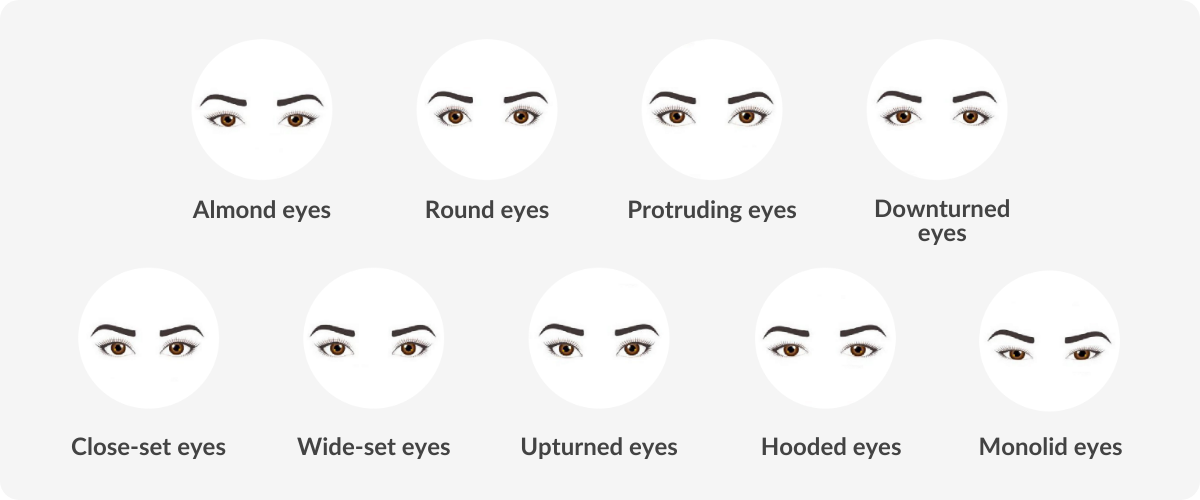
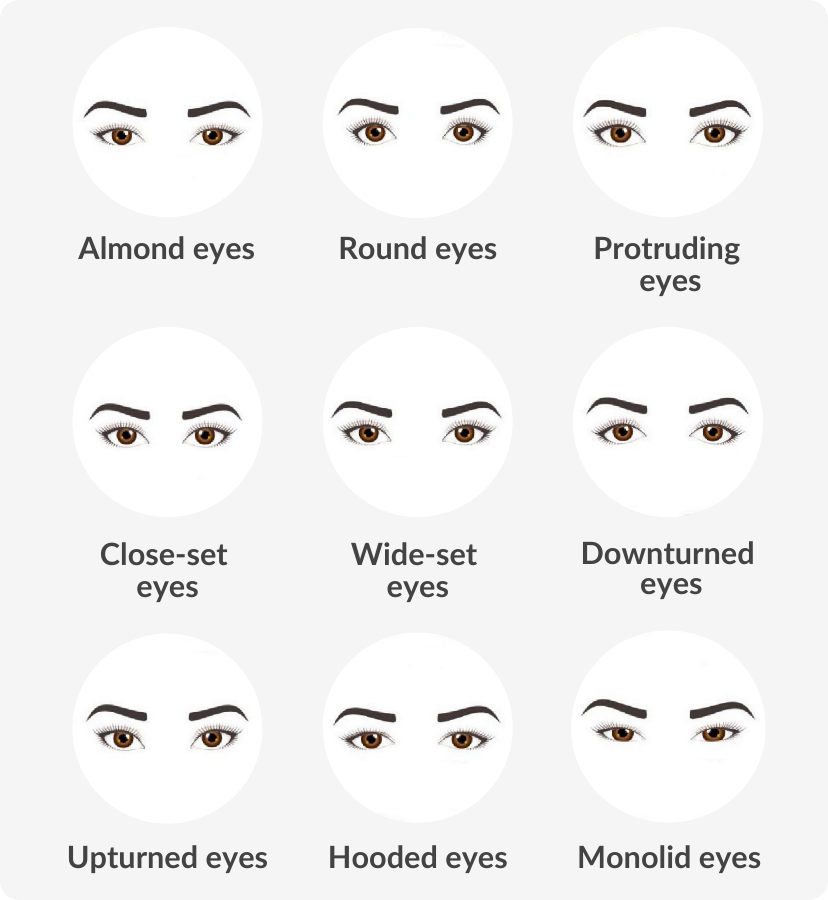
Myopia, hyperopia, and astigmatism
An elongated eyeball is responsible for myopia (shortsightedness), causing blurry distance vision. Conversely, if the eyeball is shorter than usual, it results in hyperopia (farsightedness), blurring objects in your near field of vision.
Both conditions are refractive errors, direct results of the shape of the eyeball. Astigmatism occurs when the cornea or the lens is irregularly shaped.
Exophthalmos
Exophthalmos is a condition that causes one or both of the eyes to bulge, and is often an indicator of hyperthyroidism, a serious condition with wider effects on overall health and quality of life.
Protruding eyes can be a natural aesthetic trait caused by the position of the eyeballs in the skull. However, if you don’t have naturally protruding eyes and you notice that they appear to be bulging, see an eye doctor immediately.
Ptosis
Hooded eyes are a hereditary trait, but eyelids also tend to droop with age, sometimes leading to a condition called ptosis. Ptosis occurs when the eyelid remains in a semi-closed position, or a flap of skin from the eyelid hangs over the upper lash line, obscuring vision.
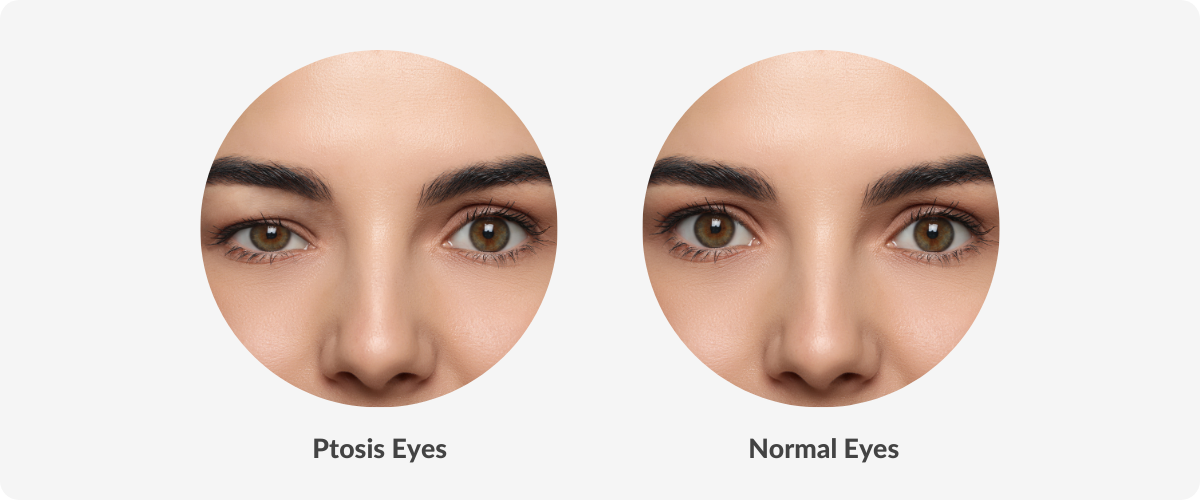
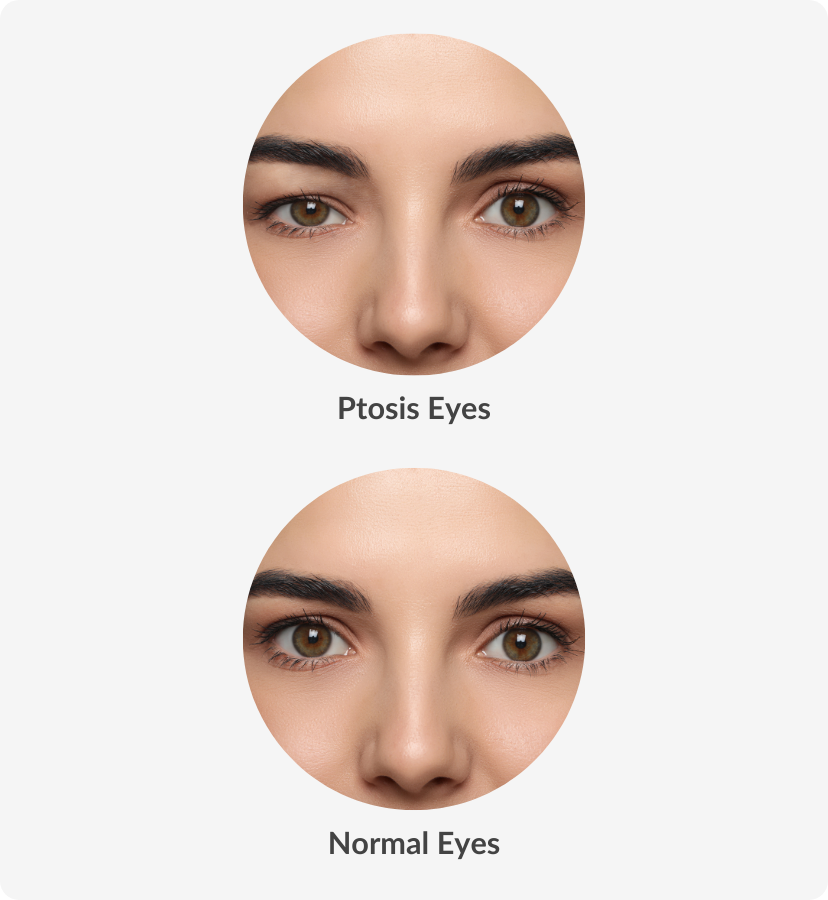
If severe and left untreated, it can lead to vision problems like astigmatism or amblyopia. Ptosis can be surgically corrected, either for cosmetic reasons, or to prevent further vision obstruction or loss.
Can I change my eye shape?
In the vast majority of cases, there is no need to surgically alter your eye shape, although some people seek cosmetic procedures to achieve their desired aesthetic.
Applying mascara, dark eyeshadow, or other eye makeup is a much less drastic alternative for those who would like to try out a different look, but you’ll have to consult a different source if you’re looking for more detailed makeup tips.
Choosing glasses frames for your eye shape
When choosing a new pair of glasses, you should always take your face shape into consideration in order to get the most harmonious aesthetic results. Eye shape has less significance in this regard, but there are certain frame styles that may complement your particular eye shape a little more than others.
If you have close-set eyes, a frame with a thin bridge will is a flattering option. If you’re on the other end of the scale with wide-set eyes, a chunkier frame would suit you well, and bright colours can draw attention away from the gap.
Square or round frames look great on round eyes, and for almond eyes, try to find a frame that’s similar to the eye shape itself.
Most importantly, remember that beauty is in the eye of the beholder, no matter what shape that eye may be! To really get the best results, choose a pair of glasses that are comfortable and that you feel confident wearing, even if that means going against the grain.





































